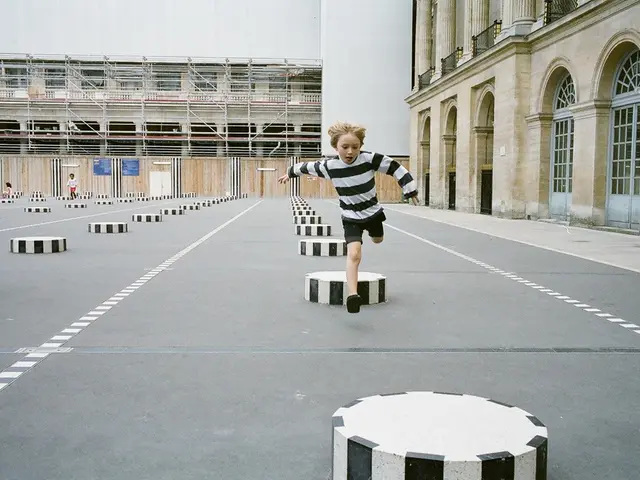AI Transformation and Its Influence on Architectural Profession
In the rapidly evolving world of architecture, Artificial Intelligence (AI) is making a substantial impact, reshaping the design process and construction industry. These new tools are not just supplemental but are becoming fundamental partners, promising to unify design collaboration, offer rule-based design generation, and create 3D models, plans, or construction documents based on design goals or constraints [1][2].
AI is enabling architects to explore innovative forms and structures that optimize space, energy efficiency, and aesthetics, enhancing creative possibilities beyond traditional approaches [1][2]. AI tools facilitate early-stage design alternatives and quick iteration, supporting rapid concept generation without sacrificing quality [3]. They also improve project management, clash detection to prevent costly errors, and collaboration between architects and engineers, streamlining workflows and increasing efficiency [1][3].
The integration of AI is leading to a shift in the role of the architect, moving away from architects as isolated artists and toward architects as curators of complex systems. Architects are learning programming languages like Python, studying data visualization, and collaborating with engineers and software developers [3]. The future architect will act as both designer and digital conductor, orchestrating a system of tools to achieve multi-dimensional design goals.
AI-powered tools can automatically create optimal layouts based on specified constraints, saving time and yielding innovative spatial solutions. These tools are being integrated into Building Information Modeling (BIM) systems to find mistakes early, simulate energy consumption, and optimize material use [3]. New platforms like NVIDIA's Omniverse, Hypar, Spacemaker, and text-to-design platforms are emerging, offering AI-integrated tools for architects [5].
However, AI still lacks the emotional intelligence and contextual sensitivity required to create architecture that resonates with people. Critics worry that over-reliance on AI could lead to homogenized or uninspired designs, and there's a concern about de-skilling if machines handle most parts of the design [2]. Architects must adopt AI with awareness, focusing on using machines to reduce friction in design, freeing up more time and energy for human connection, empathy, and imagination.
The purpose of architecture remains to improve the built environment for human life, and the human touch will always be vital. As AI handles repetitive tasks, architects may finally have the capacity to think more deeply about social responsibility, climate resilience, and urban justice. The next generation of leading firms will use these tools to create more meaningful, sustainable, and equitable architecture.
Ethical concerns include bias in AI training data leading to biased architectural outputs and questions about labor due to full automation. Architecture schools and professional firms are evolving to incorporate AI into their practices, ensuring that the industry adopts this technology responsibly [5]. Lifelong learning will be key as AI advances, ensuring architects stay in control of the design process.
In conclusion, AI is transforming architectural practice, reshaping workflows, enhancing creativity, and automating construction processes. The continued evolution of AI promises groundbreaking innovations that will redefine how architects design, manage projects, and construct the built environment in the near future [1][4][5]. The human touch will always be vital, ensuring that architecture remains rooted not only in data, but in dignity.
- Machine learning and artificial intelligence (AI) are being incorporated into education-and-self-development and career-development programs for architects, enabling them to learn programming languages like Python, study data visualization, and collaborate with engineers and software developers.
- AI-integrated tools are being developed and are emerging in the technology realm, such as NVIDIA's Omniverse, Hypar, Spacemaker, and text-to-design platforms, promising to reshape the design process, optimize layouts, and find mistakes early.
- Architects are leveraging AI tools for skills-training, facilitating early-stage design alternatives, quick iteration, and improved project management, while also addressing ethical concerns like bias in AI training data leading to biased architectural outputs and questions about labor due to full automation.
- The integration of AI into architecture is likely to continue, with future architects acting as both designers and digital conductors, orchestrating a system of tools to achieve multi-dimensional design goals. However, the human touch will remain crucial in creating architecture that resonates with people, enhancing creativity, and ensuring the purpose of architecture – improving the built environment for human life – remains at the forefront.








